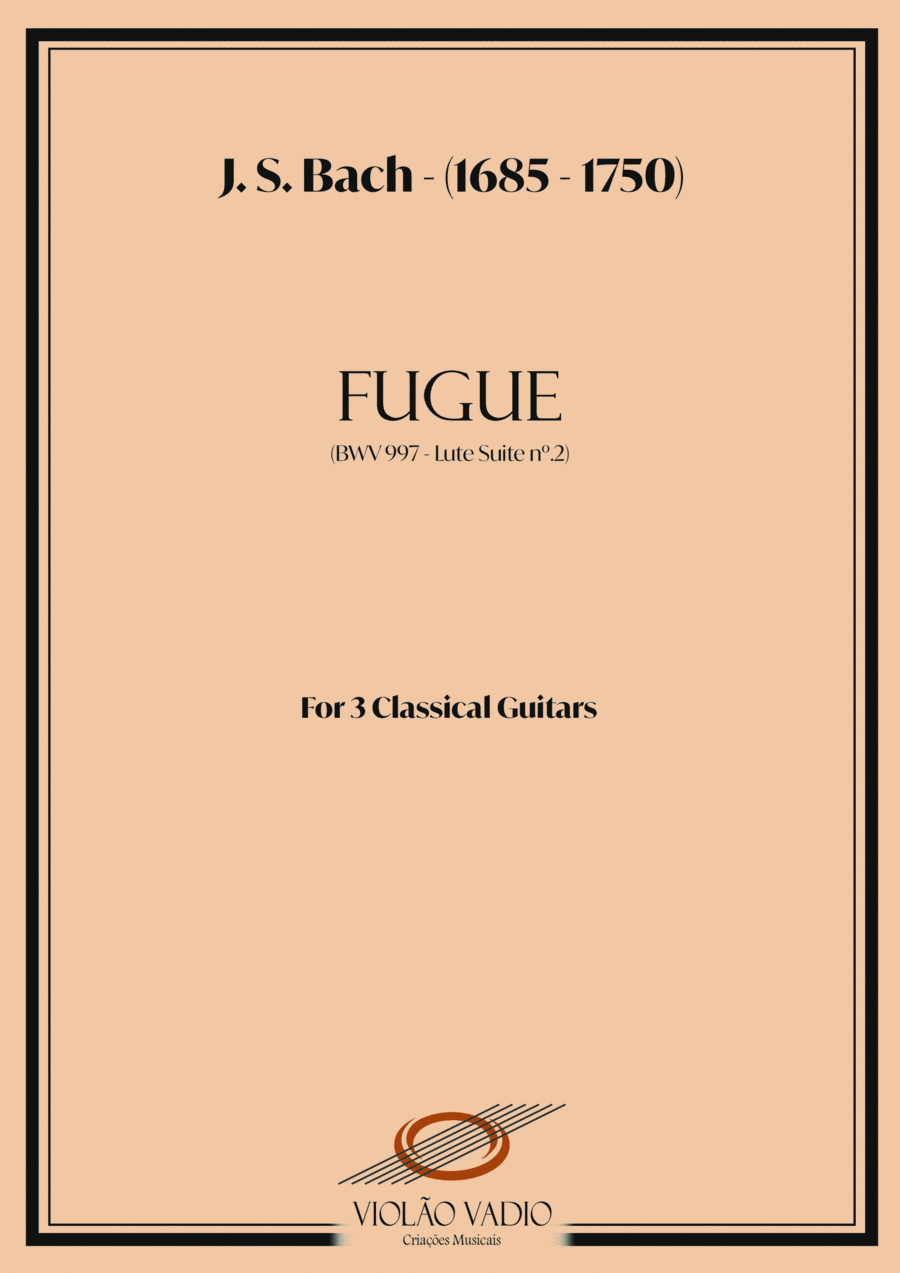Guitar - Level 3 - Digital Download SKU: A0.1091989 By Johann Sebastian Bach. By Johann Sebastian Bach. Arranged by André Alberto Santos. Baroque,Instructional,Traditional,Wedding. 17 pages. Soul - Musical Creations #696120. Published by Soul - Musical Creations (A0.1091989). This is an arrangement of the second movement of Bach's Fugue from Lute Suite No.2 BWV 997 for three guitars. Simply beautiful! This arrangement is a good exercise because the voices alternate between each other, which makes it challenging but also rewarding in the end. I recommend this piece for intermediate and advanced players and guitarists who are looking for new challenges in their playing. _____________________________________________________________ arrangement, violao vadio, sheet music, music, Score and Parts, pop, magic, song, guitar, Guitar, Arrangement, Baroque, composer, children, students, recital, staff, sheet, sheetmusic , PDF, Lute Suite, J. S. Bach, Johan, Johann, Sebastian, Bach, Trio, trio, 3 guitars, classical, 3 Guitars, classical guitar, nº2, n.2, n2, Fugue.
